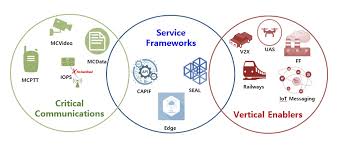FirstNet 5G: Enhancing Public Safety and Emergency Response
telcomatraining.com – In today’s fast-paced digital era, reliable communication is crucial for first responders and public safety organizations. FirstNet, built with AT&T in partnership with the U.S. government, has already transformed how emergency teams connect. With the integration of 5G technology, FirstNet is taking a giant leap forward in enhancing public safety and emergency response capabilities.
What is FirstNet 5G?
FirstNet 5G is a nationwide wireless broadband network dedicated to first responders and public safety professionals. Unlike commercial networks, it is designed to prioritize emergency communications, ensuring police, fire, EMS, and other public safety agencies stay connected even during high-traffic situations. With the power of 5G, FirstNet provides faster data speeds, lower latency, and advanced features that improve situational awareness.
Key Benefits of FirstNet 5G for Public Safety
- Priority and Preemption
During disasters or large-scale emergencies, public networks often experience congestion. FirstNet 5G guarantees priority access for first responders, ensuring critical communications go through without delays. Preemption allows the network to clear resources if needed, giving emergency teams uninterrupted connectivity. - Ultra-Low Latency
Low latency is essential for real-time decision-making. With 5G, applications such as live video streaming, drone surveillance, and telemedicine become more effective. First responders can share real-time visuals from the field, enabling command centers to make faster and more informed decisions. - Enhanced Coverage and Reliability
FirstNet’s Band 14 spectrum expands coverage to rural and remote areas where traditional signals may fail. Combined with 5G, it ensures that emergency services can remain connected even in challenging environments like disaster zones, wildfires, or rural highways. - Advanced Technology Integration
FirstNet 5G supports next-generation technologies such as IoT sensors, smart devices, and artificial intelligence. For example, connected wearables can monitor firefighter health in real time, while AI-powered analytics can predict and respond to emergencies more efficiently.
Real-World Applications
- Natural Disasters: In hurricanes, floods, and wildfires, FirstNet 5G enables faster coordination between agencies, providing real-time maps and updates.
- Public Events: Large gatherings like concerts or sports events often overload commercial networks. FirstNet ensures emergency teams remain connected without interference.
- Healthcare Response: Paramedics can transmit patient data directly to hospitals, allowing doctors to prepare before patients arrive.
Future of Emergency Response with FirstNet 5G
As technology evolves, FirstNet 5G will play a critical role in the digital transformation of public safety. Future applications could include augmented reality (AR) for training, AI-driven threat detection, and autonomous emergency vehicles powered by ultra-reliable communication.
By ensuring uninterrupted, prioritized, and secure communications, FirstNet 5G strengthens community safety and empowers first responders to save more lives.
Conclusion
FirstNet 5G is more than just a network upgrade; it is a lifeline for public safety agencies. With its combination of speed, reliability, and cutting-edge features, it is revolutionizing how first responders operate during emergencies. By enhancing communication, improving coordination, and enabling advanced technologies, FirstNet 5G ensures that emergency teams are always connected when lives depend on it.







